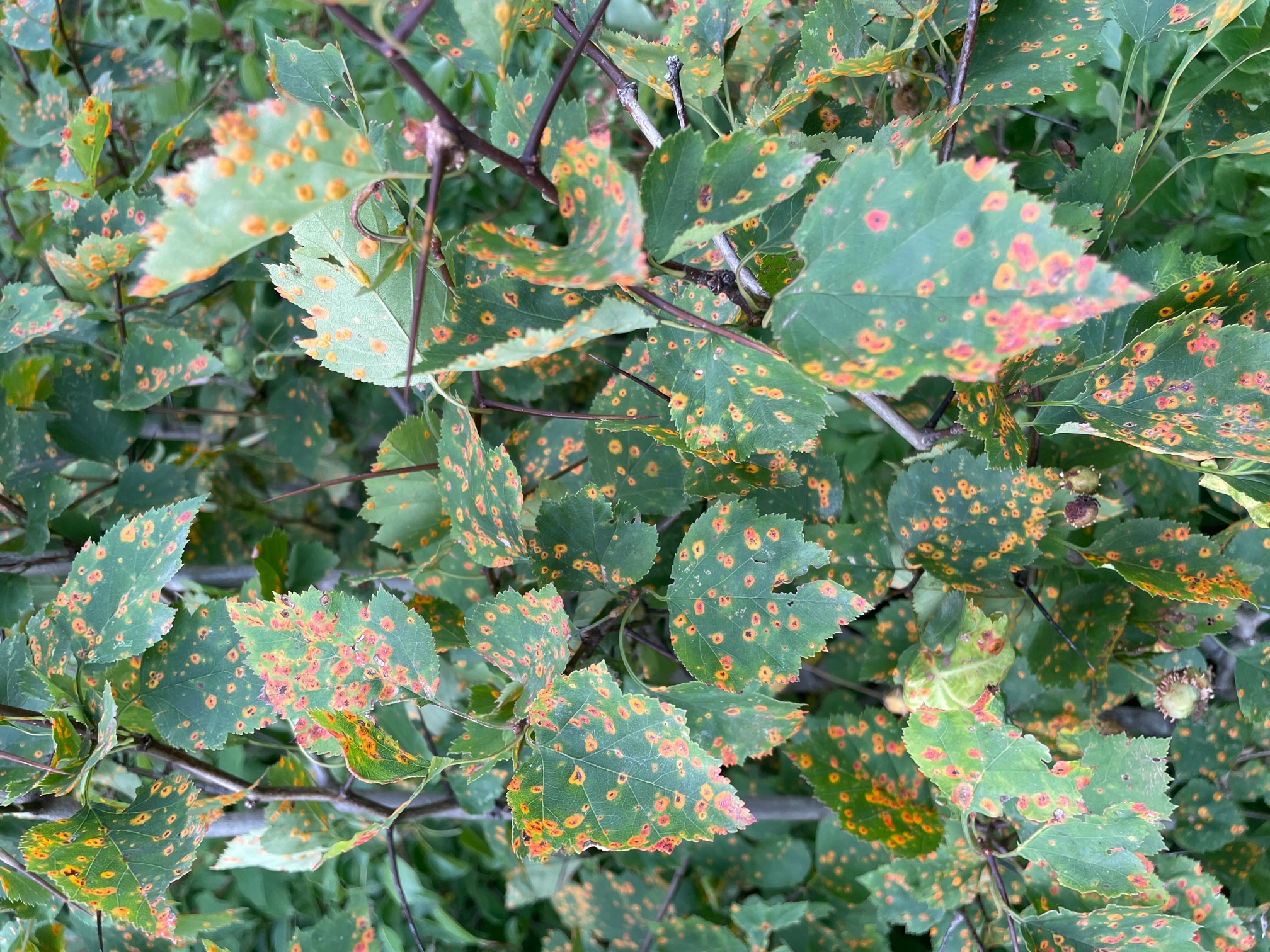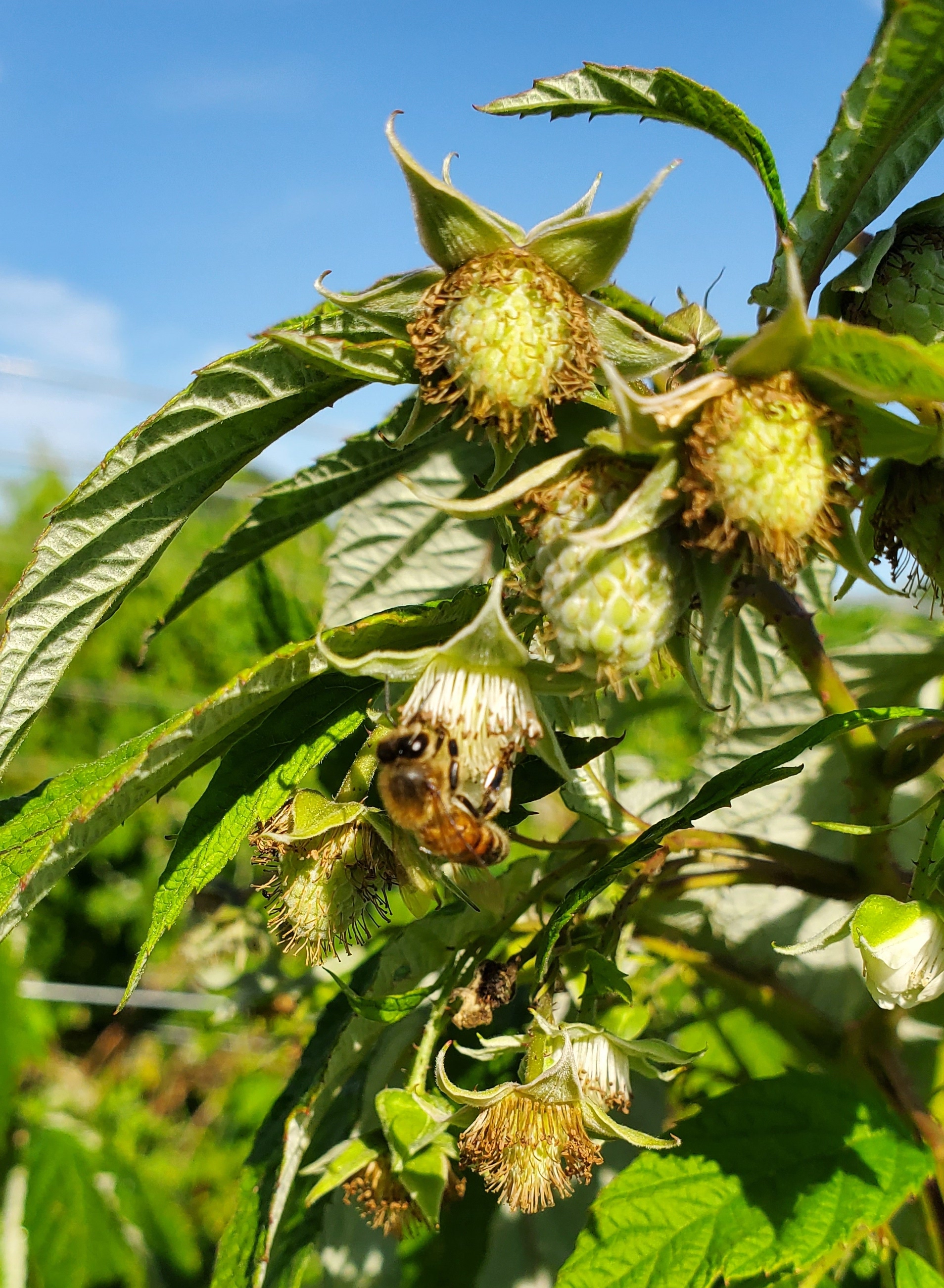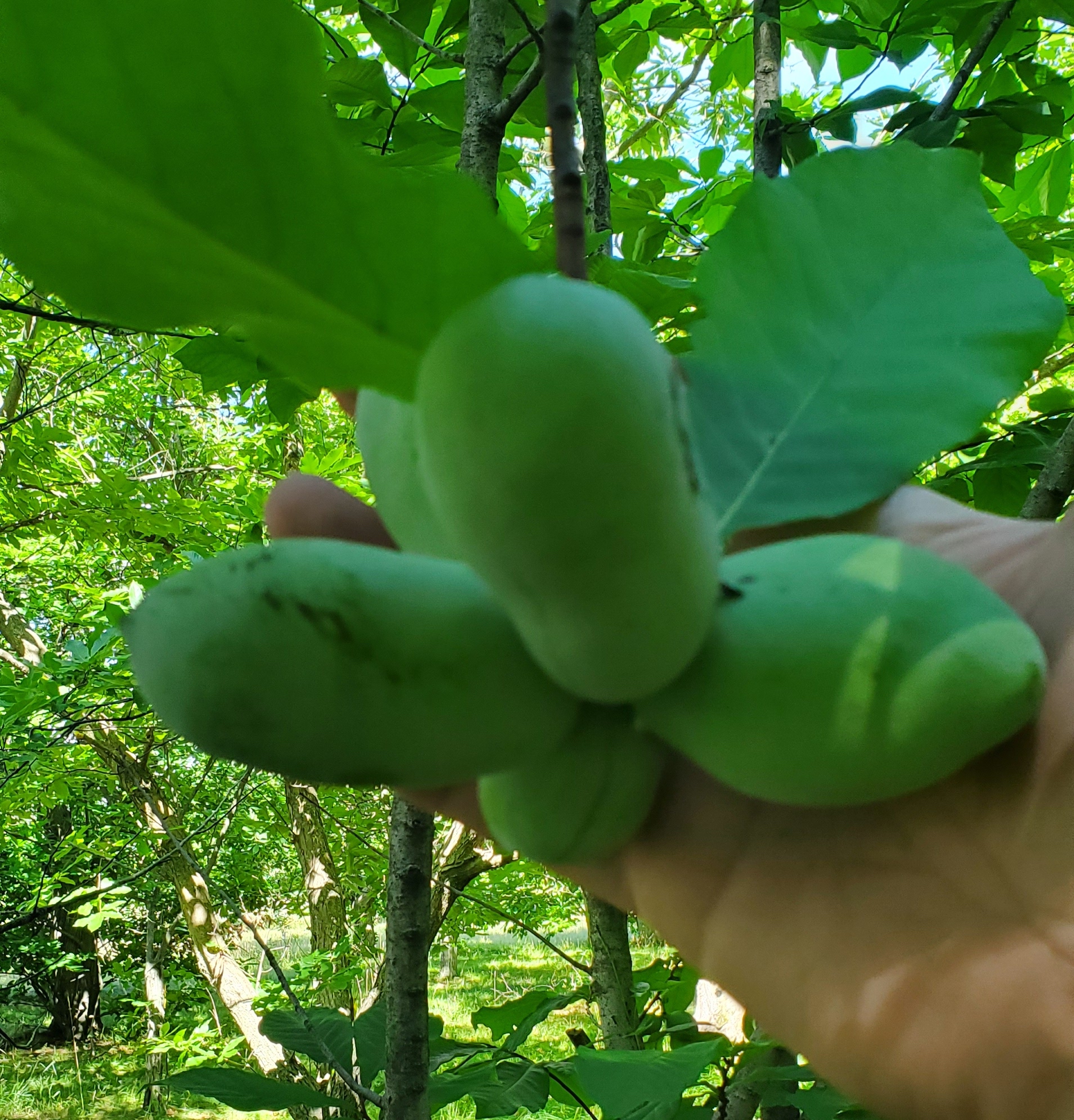Southwest Michigan fruit update – July 26, 2022
The past week’s storms have been easier on growers than expected. Very little crop impact is being reported.

Weather
We had a warmer week than last with highs consistently in the 80s throughout. The region saw showers moving along storm tracks. Some hail and severe winds were reported along the lake shore, but apparently little damage to fruit crops. Rainfall was fairly consistent across the region with an average of 1.25 inches of rain over 13 hours this past week. This is slightly less rain than we got the week before. Areas like Dowagiac, Michigan, had the most with closer to 2 inches while areas like Oshtemo, Michigan, had a little less than 0.75 inch.
This week will be cooler with highs in the high 70s to low 80s. Lows will be in the upper 50s to lower 60s. We are starting to get heavy dews every morning which help disease development. There should be some rain midweek but otherwise the forecast is for the region to stay dry.
With the warmer week last week, we picked up an above average number of degree days, 227 growing degree days (GDD) base 42, 171 GDD base 50.
|
Southwest Michigan GDD summary from March 1 through July 25, 2022 |
|||
|
Station |
GDD 42 F |
GDD 45 F |
GDD 50 F |
|
Benton Harbor (SWMREC) |
2489 |
2162 |
1659 |
|
Lawton (Lawton) |
2481 |
2157 |
1658 |
|
Fennville (TNRC) |
2307 |
1989 |
1501 |
|
Average for the SW region |
2450 |
2127 |
1630 |
|
Average last week |
2223 |
1920 |
1459 |
Tree fruit
Winds on Thursday and Friday last week took down weak limbs of older trees but generally caused apparently little significant damage. Trees are recovering with recent rains and more moderate temperatures. Japanese beetle populations are still relatively high.
Peach and nectarine harvest of Summer Serenade, Early Redhaven and Brightstar are finishing up in central Berrien County. Pink Lady is being harvested now. Starfire is about a week away from harvest. Brown rot problems seems to be associated with fruit having insect damage.

In cherries, leaf drop due to cherry leaf spot is becoming easier to see. Continue managing this disease until at least mid-August so that trees overwinter in good shape.
In plums, Japanese plum variety Shiro is being picked. The primary complaint appears to be sunburn symptoms on fruit due to high temperatures several weeks ago. Fruit left on the tree until noticeably soft is susceptible to spotted wing drosophila infestations. Gummy fruit due to earlier bacterial spot infections are a problem in some orchards. Any injury to fruit makes it more prone to brown rot infection.
Apple preharvest treatments for harvest delay, stop drop, and shelf life are summarized in an article by MSU Extension apple specialist Anna Wallis. Recent rains increase risk for the diseases sooty blotch and fly speck. EDBC fungicides such as mancozeb, though effective against this disease complex, have a 77-day preharvest interval. Other options include ziram, captan, Flint Extra, Topsin M and Prophyte.
More reports of cedar apple rust symptoms on apple leaves are coming in, however, fungicide treatments are too late now.

Apple maggot flies are being caught for the second week in the Trevor Nichols Research trapline. This insect is a concern on sandy sites with spraying to start seven to 10 days after emergence. Adults can be monitored with sticky traps with attractant colors, shapes and odors, such as bright yellow panels with protein and ammonia baits and red spheres baited with apple volatiles.
Woolly apple aphid colonies are becoming easier to find. Using adjuvants with penetrating properties are important for effectiveness of insecticides for woolly aphids.
Codling moth and oriental fruit moth are the primary insect concerns for most orchards. Farm-specific trap counts for these two insects are the best guide for judging the need for treatment.
Small fruit
Grape clusters are at berry touch or bunch closure. Some wild grapes have been seen starting veraison. Early hybrid wine varieties should be entering veraison soon.
Disease management of phomopsis, black rot, downy and powdery mildews are the primary focus currently. The heavy dews we are experiencing means it is important to maintain protection against Downey mildew. With tight clustered varieties, this is the last chance to get cluster disease sprays into the clusters.
Grape berry moth is late in its second generation. For high pressure sites, mid-generation cover sprays two weeks after the spray at biofix will help manage the later generations closer to harvest.
Blueberry harvest is in full swing in southwest Michigan. They are finishing up with early varieties. Mid-season varieties are in their second pick in most areas. Disease focus should continue to be on early fruit rot management. Even with the rain the past few weeks, irrigation should be continued to maintain moist soils, especially in sandy sites. Early fruit size is generally good, but continued water helps keep the berry sizes high for subsequent pickings.
Spotted wing Drosophila (SWD) populations have increased over the last week, likely due to the rain and cooler temperatures. The numbers are still low but will increase quickly as fruit in the wooded areas around fields continue to ripen.
Bramble harvest continues. Fall bearing blackberries have started blooming. Maintain fungicide programs to protect from fruit rots and monitor for SWD so you can stay ahead of the expected population increase coming soon.

In cranberries, there is a wide range of fruit size, from pea to full size. Some fruit rots were observed in the field.
Gooseberry harvest is complete. Black currants are being picked now.
Chestnut burrs are developing. This is the time of year to begin protecting burrs from chestnut weevil infestations. There are two species of weevils. The large chestnut weevil flight window is in August and September. The lesser chestnut weevil emerges in September and October. Both species are present in Michigan, but many locations only have one species. Monitoring can be valuable in determining which species you have and when to start your sprays. See this article for more information about the two species: “Chestnut weevil: A potential pest of Michigan chestnuts.”
Paw paw fruit are generally a couple inches long. Fruit set looks good this year.

Upcoming meetings
A blueberry field day is scheduled for Aug. 24 at the Trevor Nicholls Research Station in Fennville, Michigan. More information to come.
Related articles
This work is supported by the Crop Protection and Pest Management Program [grant no 2021-70006-35450] from the USDA National Institute of Food and Agriculture.



 Print
Print Email
Email
